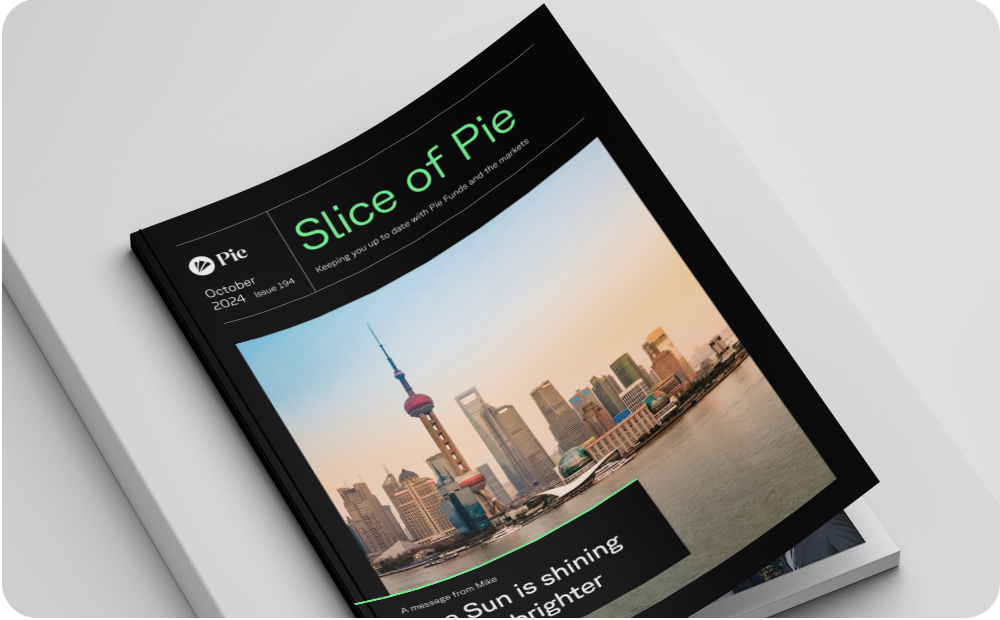September 2024 was an eventful month for global markets, shaped by several key macroeconomic and geopolitical developments. The combination of a U.S. Federal Reserve rate cut, new stimulus measures in China, and the early stages of the U.S. election cycle provided both opportunities and risks across various asset classes.
Federal Reserve Rate Cut:
In a widely anticipated move, the Federal Reserve cut interest rates, but by a larger than expected amount, 50 basis points, reducing the target range to 4.75% - 5.00%. The Fed cited softer inflation data and signs of slowing economic growth as justifications for the cut. This marked a pivot from the Fed’s previously hawkish stance, reflecting growing concerns over a potential economic slowdown heading into 2025. Equity markets reacted positively, with interest-rate-sensitive sectors like real estate and utilities rallying. Bond yields also fell, benefiting long-duration bonds and fixed-income portfolios.
China's Stimulus Measures:
China’s economy and stock market have been facing significant headwinds since COVID. By late September, sentiment both domestically and internationally about the outlook was about as bad as it gets. This promoted the People's Bank of China and the Xi government to act in a “whatever it takes” moment. The package included increased government spending on infrastructure projects, tax relief for businesses, and measures to boost consumer spending, including stimulus cheques directly into the hands of the consumer. These actions drove a phenomenal rally in everything from Chinese stocks to luxury goods to iron ore. While sceptics remain as to whether this will be enough, it’s certainly changed the direction of travel for now.
The Case for a Market Melt-Up
So often, we hear the term market melt-down. But what about a melt-up? As we approach year-end, there is growing speculation about the potential for a market "melt-up" - a sharp and significant rally driven by investor sentiment rather than fundamentals. Several factors are converging that could lead to a euphoric surge in equities.
1. Monetary Easing:
The Federal Reserve’s recent rate cut has signalled a shift toward a more accommodative stance. Historically, when central banks pivot toward looser monetary policy, it often spurs risk-taking in equity markets. With bond yields declining, investors are being pushed further into equities in search of higher returns. This dynamic can fuel a market rally as capital flows into risk assets.
2. Economic Resilience:
Despite concerns about slowing growth, both the U.S. and global economies continue to demonstrate resilience. Corporate earnings have held up better than expected, particularly in sectors like technology, which continue to show strong revenue growth. Furthermore, consumer spending remains robust, underpinned by strong labour markets and wage growth. These factors may provide the economic foundation for a final surge in equity prices as investors feel confident about future growth prospects.
3. China’s Stimulus Impact:
China’s substantial stimulus efforts are aimed at jump-starting its economy after a prolonged period of slowdown. With increased government spending and efforts to boost consumer demand, global commodities and export-oriented industries are benefiting. If China’s stimulus leads to stronger global growth, equity markets could experience a broad-based rally, particularly in sectors tied to industrial production and trade.
4. FOMO (Fear of Missing Out):
As markets continue to push higher, side-lined investors who have missed out on previous gains may feel compelled to enter the market to avoid further underperformance. This FOMO effect can lead to increased buying pressure, especially from retail investors and institutions that have been holding more cash or fixed-income assets during the year. This dynamic can create self-reinforcing upward momentum, propelling markets beyond their fundamental value.
5. U.S. Election Uncertainty:
Finally, I would like to highlight two funds that had a strong month in September. Firstly, the Property & Infrastructure Fund, which posted strong gains of 4.7% as our thesis and rationale for launching the fund continues to play out. It’s not too late to join the fund which we believe has multi-decade tailwinds. Do you have any infrastructure exposure? Would you like to join this fund?
Secondly, the Australian Growth 2 Fund, managed by Michelle Lopez and Kent Williams, has delivered strong returns under their watch. Fund outperformance is not something that miraculously happens overnight; it’s a process of lots of little decisions over a period of time and requires dedication, skill and hard work. I’m pleased to say the fund has returned 33% and is 12.8% ahead of its benchmark. Well done to both, and to our clients for staying loyal to us during 2022. Your patience has been rewarded.
If you would like to keep track of market moves in real time, you can follow me on , where I post my daily thoughts on the market
Warm regards,
Mike Taylor
Founder & Chief Investment Officer
Information is current as at 30 September 2024. Pie Funds Management Limited is the manager and issuer of the funds in the Pie Funds Management Scheme and Pie KiwiSaver Scheme (the Schemes). Any advice is given by Pie Funds Management Limited and is general only. Our advice relates only to the specific financial products mentioned and does not account for personal circumstances or financial goals. Please see a financial adviser for tailored advice. You may have to pay product or other fees, like brokerage, if you act on any advice. As manager of the Schemes’ investment funds, we receive fees determined by your balance and we benefit financially if you invest in our products. We manage this conflict of interest via an internal compliance framework designed to help us meet our duties to you. For information about how we can help you, our duties and complaint process and how disputes can be resolved, or to see our product disclosure statement, please visit www.piefunds.co.nz. Please let us know if you would like a hard copy of this disclosure information. Past performance is not a guarantee of future returns. Returns can be negative as well as positive and returns over different periods may vary.
